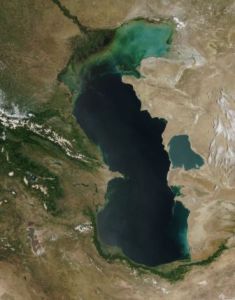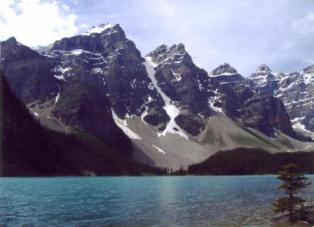|
Lake Geography
|

|
Lakes are large bodies of water that are surrounded by land and are not part of an ocean. Lakes are relatively still bodies of water when compared to a river where the water flows. They can contain either salt or fresh water and are larger than ponds. For more on lake habitats see our page on the freshwater biome.
Below are descriptions of some of the larger and more important lakes in the world:
Caspian Sea
The Caspian Sea is the largest lake by surface area in the world. It is so large that it is sometimes classified as a minor ocean or as the world's only sea that doesn't connect to an ocean. There are five different countries that have coast lines on the Caspian Sea including Russia, Iran, Kasakhstan, Azerbaijan, and Turkmenistan. Over 130 rivers flow into the Caspian Sea with the largest being the Volga River.
The Great Lakes
The Great Lakes are located in North America on the border between Canada and the United States. They include five lakes: Michigan, Huron, Erie, Ontario, and Superior. Together they make up the largest freshwater lakes on earth. Twenty-one percent of the worlds surface fresh water is held by the Great Lakes.
The surface of Lake Ontario is quite a bit lower in elevation than the rest of the Great Lakes. The elevation difference is mostly made at Niagara Falls where the water level drops from 569 feet in Lake Erie to 243 feet at Lake Ontario.
Many great cities have been built up on the coast of the Great Lakes including Chicago (the largest), Toronto, and Detroit.
Lake Baikal
Lake Baikal at 5314 feet deep is the deepest lake in the world. It's located in southern Russia. It's also the world's largest lake by volume and the second longest lake in the world.
Lake Tanganyika
Lake Tanganyika is the longest lake in the world at 410 miles long. It's also the second deepest and the second largest in volume. Lake Tanganyika is located in Africa and has coastline in four countries including Tanzania, Zambia, Democratic Republic of the Congo, and Burundi.
Lake Titicaca
Lake Titicaca sits 12,500 feet above sea level in the Andes Mountains between Peru and Bolivia. It is the largest lake in South America and also is the highest navigable lake in the world.
Lake Victoria
Lake Victoria is the largest lake by surface area in Africa. The first European to discover the lake was British explorer John Speke who named the lake after Queen Victoria. Three countries share Lake Victoria including Tanzania, Kenya, and Uganda.

Fun Facts about Lakes
- The Dead Sea in Israel is the world's lowest lake at 1,371 feet below sea level.
- The highest lake in the world is Ojos del Salado at 20,965 feet high. It is located in a crater in the Andes Mountains on the border between Chile and Argentina.
- The largest lake in Europe is Lake Ladoga in Russia.
- A subglacial lake is a lake that is permanently covered by ice. The largest of these is Lake Vostak in Antarctica.
- Lakes can form in interesting different ways such as in the craters of volcanoes, by sinkholes in the ground, or even artificially by dams made by man.
- There are over 187,000 lakes in Finland giving the country the nickname The Land of the Thousand Lakes.
Top 10 Lakes by size and depth
Back to Geography Home Page
